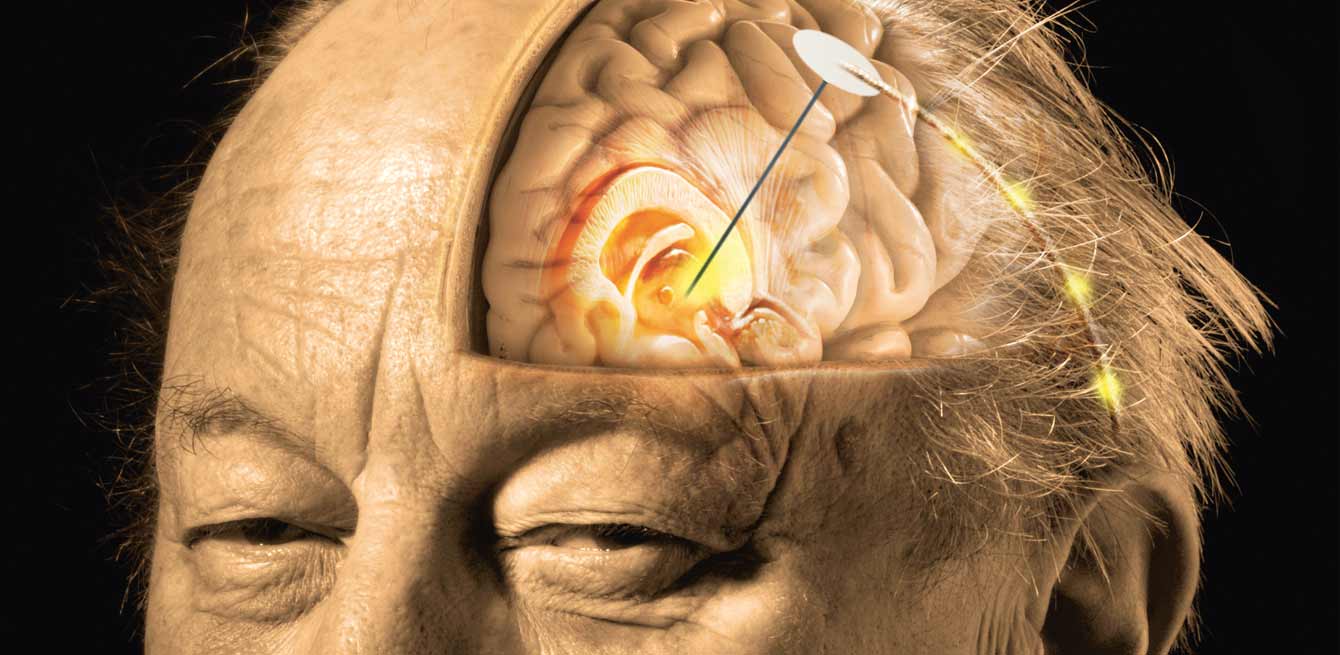
Electricity is gaining interest from doctors in treating certain health issues such as asthma, heart conditions or Parkinson’s disease. And new areas of research continue to develop.
Full of nerve impulses, pulses and neuron activity, the human body is an electric power station. And medical diagnosis could hardly do without electricity. Anyone who has had an electrocardiogram (ECG) can confirm it. However, the therapeutic use of electricity has always been subject to debate. Many believe it is limited to transcutaneous electrical nerve stimulation (TENS). This technique, which involves placing electrodes on the surface of the skin, is very commonly used in hospitals in Germany and the United States. By adjusting the electrical frequency and treatment duration, pain specialists relieve the pain of patients suffering from rheumatism or arthritis who are resistant to analgesics. But other therapeutic applications of electricity are also being explored.
Electrotherapy is already effective in treating an irregular heartbeat. This condition is common after age 65 – 5%
of the world’s population in this age group suffer from arrhythmias – and can affect younger people as well. “Medicine does not always work, and pharmaceutical research is having trouble finding effective molecules,” says Martin Fromer, chief of the Cardiac Arrhythmia Unit at the Lausanne University Hospital. For several years, he and his team have been treating arrhythmias by inserting a catheter into the heart of patients. “Progress in imaging allows us to combine electrical and anatomical information to provide a mapping of the precise location that is causing problems.” The practitioner uses catheters to treat structural abnormalities using electromagnetic currents at different frequencies. This technique stabilises the condition in older patients and reduces the risk of sudden death. Patients under age 30 are healed permanently.
Deep brain stimulation
Electricity is also used to treat neurodegenerative diseases such as Parkinson’s. Deep brain stimulation (DBS) has provided neurologists with a reversible and adjustable therapeutic technique that has improved over the past twenty years that it has been in use. Doctors implant an electrode in each hemisphere of the brain, using a three-dimensional reconstruction of the brain for positioning. The electrodes are then connected to an implanted pulse generator, generally placed below the clavicle. DBS has been a success in severe cases by significantly reducing the worst symptoms such as akinesia (inability to perform certain body movements) and rigidity. Although promising, the procedure requires close post-operative monitoring as it can have complicated side effects in 2% to 3% of cases, which include disorientation, hemiparesis (partial paralysis) and haematomas.
In the time of the Roman Empire, doctors were already using electricity to heal their patients, using a natural electric power source: fish. Scribonius Largus, Emperor Claudius’s personal doctor, has remained famous for trying to offer his patient relief from gout pain and frequent migraines.
He would place a torpedo ray between the emperor’s eyebrows and allow the fish’s electrical discharges to continue until the patient felt numb. Torpedo rays can give off electric shocks that exceed 30 amperes.
Deep brain stimulation has also attracted specialists in other neurological disorders. At the Grenoble Institute of Neuroscience, physicist Olivier David has been working in close collaboration with the neurologists from the Grenoble University Hospital on certain forms of epilepsy that are resistant to traditional treatments. “When the electrode implanted in the brain detects an anomaly in the neuronal electrical activity, it emits an electrical stimulation to regulate it.” The initial clinical trials are encouraging. “In one out of two patients, we have managed to reduce the number of epileptic seizures by 50%,” states Olivier David. This does not mean that the new form of treatment will be approved immediately. “Technically, the intervention is reliable, but it will take another five to ten years to define procedures and determine how insurance companies will cover this type of therapy.”
Relief for asthmatics
In San Antonio, Texas, Pedro Sepulveda, a pulmonologist at the Alamo Clinical Research Center, is at a similar stage
of development. He and his team have experimented
with electrotherapy in severe asthma cases in which patients do not respond to pharmacological treatments like oral corticosteroids or bronchodilators. “The procedure involves placing, under local anaesthetic, an ultrasound-guided percutaneous electrode (Editor’s note: by needle-puncture through the skin) near the carotid sheath (Editor’s note: in the neck),” the specialist explains. The area was then electrically stimulated for three hours.
And the results were conclusive. The maximum expiratory volume per second in patients increased 10% to 15% within
30 minutes following the intervention. “In the future, these non-pharmacological treatments could offer relief for
the weakest patients.”
The year during which the Geneva-based physicist Jean Jallabert developed an electrostatic generator used to stimulate muscle contractions in paralysis patients.
The frequency in hertz of currents used in transcutaneous electrical nerve stimulation, a technique used to treat pain.